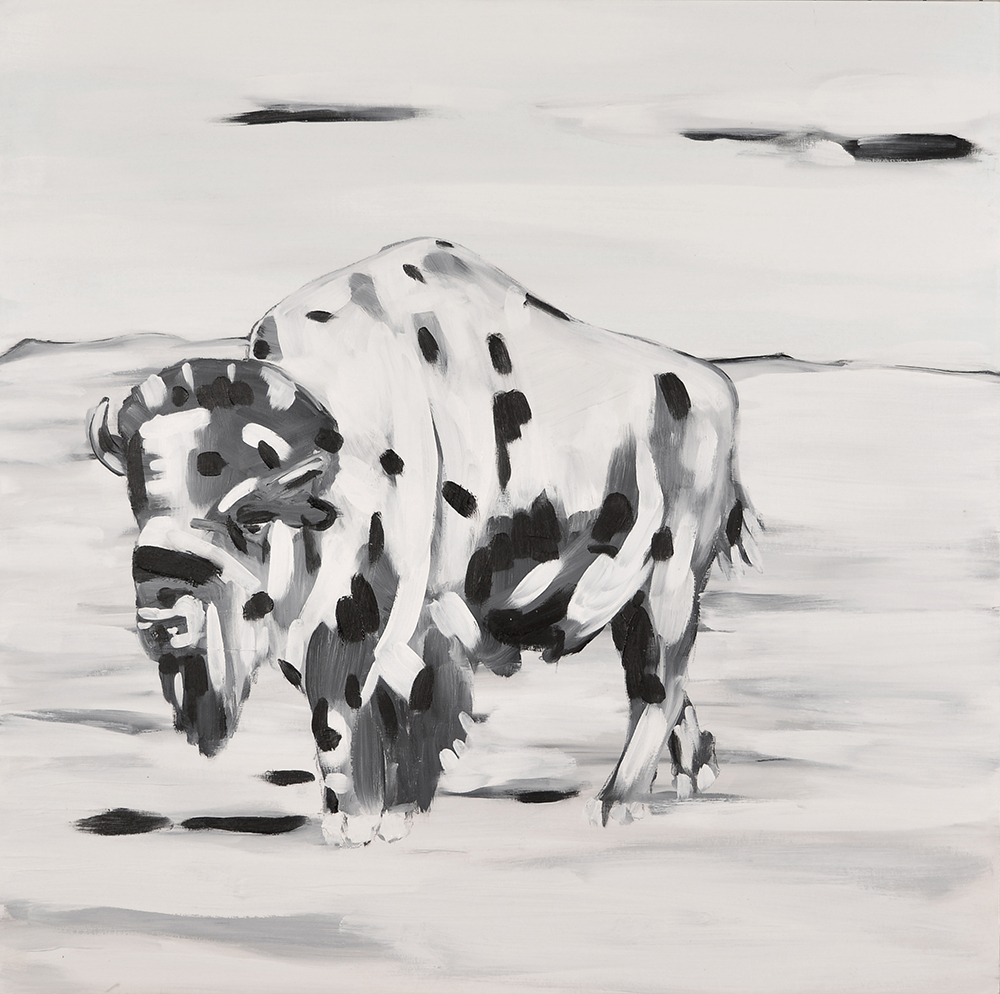Adrian Stimson
Another artist that works with the concept of memory is Adrian Stimson. Adrian Stimson is an interdisciplinary artist and member of the Siksika Nation in Alberta. He holds a BFA from ACAD, and an MFA from the University of Saskatchewan.
Stimson’s work fits into a few broader categories of medium and approach, though much of the theming is related. There is performance art and video, featuring characters like “Buffalo Boy” and “Shaman Exterminator”, exploring the notion of identity. There is sculptural installation, reflecting on his experiences as a residential school Survivor, and as a Veteran and Canadian Forces Artist in Afghanistan. Our focus in this exhibition, though, is his painting. Painting was Stimson’s chosen major in his BFA, a medium that resonated. He first took an interest by watching Ken and Michael Lonechild, who had themselves learned from Allen Sapp.
A common focus in Stimson’s paintings is the bison. A central figure in Siksika culture, the bison here is symbolic. It represents not only the fragility and loss of the animal and the people depending on it, but the resilience and strength of the same. It evokes a resonance of past, present, and future without implying any particular time period.
Bison Heart XXI was part of a series inspired by visiting a bison farm in Tugaske, SK. Stimson went to his friend’s bison paddock on a bright snowy day and took photos of them, prominent against the snowy background. This led to a series of paintings in white paint mixed with various amounts of graphite powder to create a highly adjustable greyscale. Each features bison in vast, stark, imagined landscapes. Stimson considers each bison he paints to be a memory of one that was slaughtered. He feels their energy still exists in the world and it moves him to create.
Bison Abstract II is from a later series. Like the earlier series, it features greyscale bison in white landscapes, though this series introduces black paint in addition to the white and graphite. It experiments more with the process, and really tries to break down the form of the bison. It again considers the bison and their particles and energy still existing in the world in other forms. The abstracted shapes in the bison form can be thought of in many different shapes, like looking at clouds.
As the Elders have explained to Stimson, the Blackfoot concept of time is such that there is today, and then as many as two days ahead, and two days behind. This leads both to living squarely in the present, but also to considering the distant past and future as intermingled with the present. The context of the past and repercussions of the future feel more real and current. The ancestors and descendants are there with you, and what you do now affects the past and future. It also allows for a fascinating sort of work that can be imbued with memory and contextual weight while also not visually occupying any particular point in time.
See Bibliography for sources.



